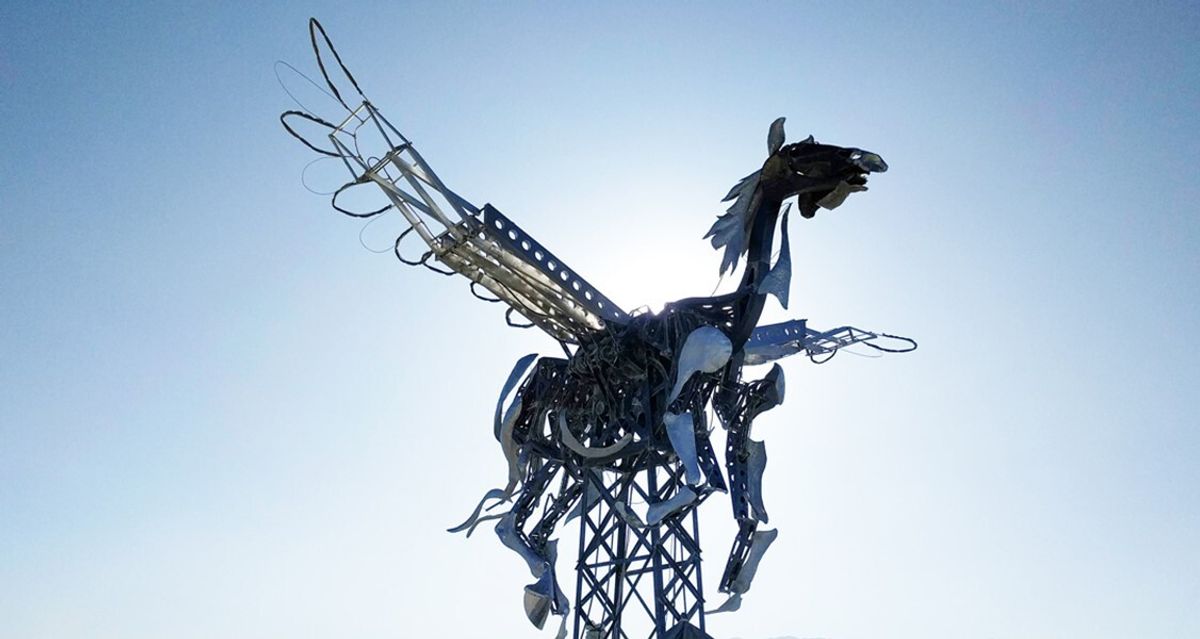Ever since it was co-opted by Silicon Valley biohackers and Paris Hilton, the cultural cache of Burning Man festival, which once a year builds a temporary village full of vast sculptural installations in the Nevada desert, has been in steady decline.
Now, in a move that does little to revive its countercultural relevance, the festival will collaborate with Sotheby's to unveil 12 giant sculptures in the grounds of the historic Chatsworth House in Derbyshire, England— because what embodies free-wheeling radicalism better than a 275-year-old auction house owned by a telecoms billionaire and an Italianate mansion best known as the backdrop of the 2005 film adaptation for Jane Austen's Pride and Prejudice?
The exhibition Radical Horizons: The Art of Burning Man at Chatsworth (9 April-1 October) will feature eight existing sculptures from Burning Man and four works built on site. The works—which are shockingly not yet NFT'd—include an inverted airplane and a metal pegasus by Adrian Landon.
The unlikely pairing between a creative collective built on principles of anti-commerce and the beating heart of the art market is the brainchild of Sotheby's chief executive Charles Stewart and Fab Five Freddy, a “Burner". They also credit the exhibition's executiion to Chatsworth's current proprietors, the "forward thinking Duke and Duchess of Devonshire".
Despite the Derbyshire climate being a far cry from the American Southwest, visitors to the exhibtion are advised to get into the Burning Man spirit by donning sunglasses and replying with an enthusiastic thumbs up when asked by passersbys "if they're feeling it yet?".


